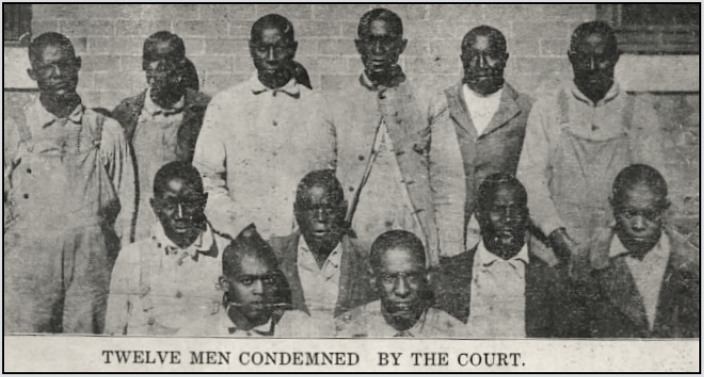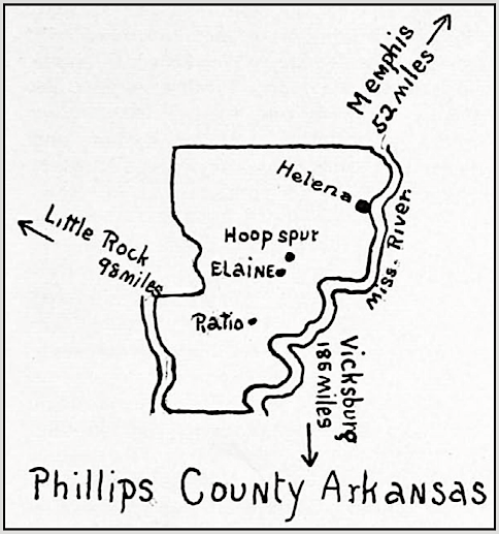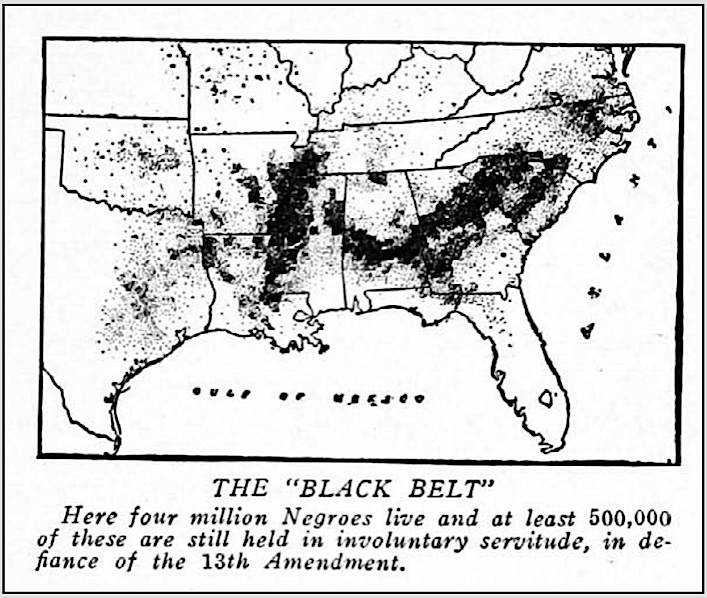 ———-
———-
Hellraisers Journal – Friday February 20, 1920
Phillips County, Arkansas – White Landlords Terrorize Negro Tenants, Part II
From the Appeal to Reason of February 14, 1920:
White Landlords, Robbing Negro Tenants,
Let Loose Arkansas Reign of Terror[Part II of II.]
Early in 1919, some of the young negroes who had returned from the army began an organization of the negro share croppers, under the name of “Farmers’ and Householders’ Progressive Union of America,” for the purpose of getting relief from the abuses their people were made to suffer. The charter and constitution of the organization was drawn up by two prominent white lawyers at Winchester, Ark. The organization was looked upon with much disfavor from the start by the land owners. So the plans of the organization had to be carried on in secret, but it met with instantaneous approval of the negro laborers. The organization arranged that friendly and trustworthy counsel was furnished the negroes who would bring suit and force the land owners to make a settlement with the negroes and in many instances they were forced to pay back to them hundreds, and some instances, thousands of dollars that they were stealing from their tenants.
These negroes had grown a bumper crop this season, some families making as much as fifty bales of cotton, twenty-five of which was theirs. Cotton this season in this locality was selling at from fifty to seventy-five cents per pound, or $250 to $300 per five hundred pound bale, or over $5,000 for the tenant’s share of the crop, while everything they purchased at the land owner’s store was sold at 50 to 100 per cent higher than at cash stores in nearby towns. These negro tenants were due to have several thousand dollars as their share of the crop for their work. This the land owners could not allow for various reasons. If the negroes got out of debt, they might leave the farm, then they would not trade at their stores if they had the cash to buy from mail order houses or the cash stores in the towns.
The land owners began to make arrangements to again ship the negro’s cotton without asking his consent or rendering him a statement of his store account. The negroes went to their organization for aid and counsel. A representative of their organization went to a prominent white attorney for counsel [Ulysses S. Bratton], who they knew was a friend to all labor organizations. This attorney was not in his office at the time the delegation called, but his son [O. S. Bratton], who was in charge of the office in his father’s absence, advised the delegation to get their members together and he would come out and meet them, and investigate their claims. The representatives of the negroes returned and called a meeting in one of their churches, to advise their members.



